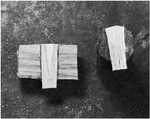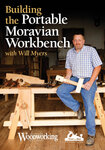We may receive a commission when you use our affiliate links. However, this does not impact our recommendations.
 Any devoted home barista will tell you that if you are considering a $2,000 espresso machine, instead spend a grand on the espresso machine and a grand on a good grinder and you will get better brews. Coffee beans ground too fine, too coarse, or inconsistent in size will never yield a good espresso shot, no matter how expensive the brewing machine.
Any devoted home barista will tell you that if you are considering a $2,000 espresso machine, instead spend a grand on the espresso machine and a grand on a good grinder and you will get better brews. Coffee beans ground too fine, too coarse, or inconsistent in size will never yield a good espresso shot, no matter how expensive the brewing machine.
When people ask me whether they should spend the extra money to get the newest whiz-bang one-millionth-of-a-micron filter on their new dust collection system, I wonder if the investment will be worth it. Dust spewing off the top of their table saw blade, spraying off the top of their router table, and billowing like a cloud behind their miter saw will hang in the air or drop to the floor and never even make it to that sub-micron filter. All that filtration technology will be thwarted and their money will have been poorly invested until steps are taken to corral the dust at its source.
I recommend any dust collection budget be broken roughly into thirds. Spend a third of the budget on the machine, a third on the ductwork (pipes and/or hoses), and a third on what I call “point of capture” strategies.
Adding an over-the-blade guard with a dust collection port to a table saw may cost a couple hundred dollars, but without it, even the most expensive dust collector can’t keep the air clean. A good shroud or box behind a miter saw might take a day to build and a few dollars in materials, but will likely improve cleanliness and shop air quality more than a pricey step-up to sub-micron filtration. A router table fence with an integral dust collection port will enhance overall dust collection significantly. These are just a few examples of “point of capture” strategies. Why are these so important?
Dust collection in the workshop relies on airflow to lift and move wood chips and sawdust. Some guidelines recommend 400 Cubic Feet per Minute (CFM) of airflow for table saw dust collection. To move 400 CFM of air in a 4-inch pipe requires the airstream to be moving a little over 4,500 Feet Per Minute (FPM). Sounds fast, but a particle of dust flung off of a 10-inch table saw blade running at 3,500 RPM is initially travelling at over 9,000 FPM. For the dust collection airflow to overcome the inertia of the sawdust and “suck” it into a hose or pipe, the air would have to be moving faster than 9,000 FPM, which is close to 800 CFM. Putting a blade guard with a dust collection port over the table saw blade slows down the air movement caused by the spinning blade and helps block the expulsion of dust particles, allowing the dust collector’s air flow a better opportunity to capture and transport the particles.
Achieving optimal dust collection in a woodworking shop requires a three-part strategy… a “holistic” approach. In my upcoming Webinar class, this “holistic” approach is explored in greater detail along with strategies for selecting the best dust collection system for each shop based on individual needs. We will sort out the differences between types of machines, learn the key performance measurements and formulas and how to use them, dispel some common myths, and more. Look forward to seeing you!
Don’t miss Steve’s live webinar on March 25 at 8:30PM EST, Dust Collection Systems: Choosing, Installing and Maximizing Performance.
Here are some supplies and tools we find essential in our everyday work around the shop. We may receive a commission from sales referred by our links; however, we have carefully selected these products for their usefulness and quality.










There are NIOSH documents specifically suggesting dust collection via the blade guard of a table saw.